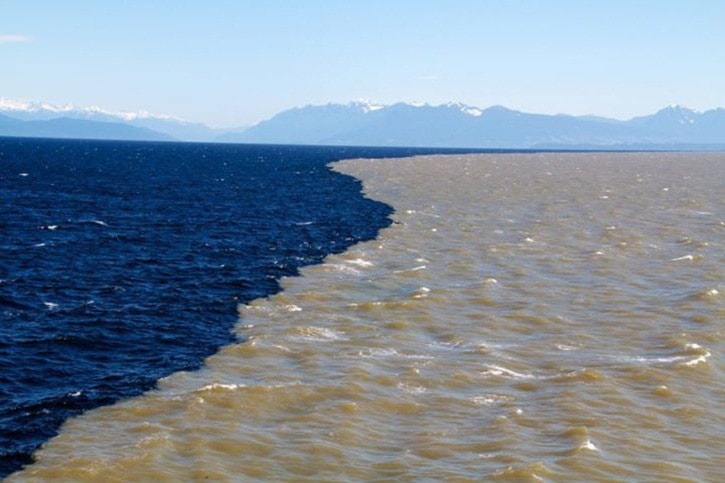The Fraser river is running high as snow melt pours off the mountains.
We are close to the peak of freshet season.
As the river water flows into the salty waters of the Georgia Strait, it forms an unusual ecosystem: the Fraser river plume.
The plume is a cloud of turbid river water, full of sand and silt, which floats over the heavier salt water of the ocean.
During an ebbing tide, the plume reaches as far as Galiano Island and the line of demarcation is easily seen from ferries crossing the Strait.
As the tide floods in, the silty, yet light, river water and the clear, heavy, salt water become mixed.
This process, repeated twice daily, effectively creates two types of plume: one predominantly fresh water, the other, brackish remnants of earlier ebb tides.
The salt wedge toe, nudging into the estuary at high tide, allows nutrients to be brought to the surface from the deep, cold ocean. This increases the density of phytoplankton, microscopic plant matter that drives the marine food chain.
The tiny plankton are consumed by microscopic animals, such as copepods. Small fish and crustaceans prey on them, and are, in turn, eaten by larger fish, birds, and marine mammals.
The edge of the plume is an excellent place to watch for wildlife, such as loons, grebes, porpoises and orcas.
The plume is a key part of the estuary, allowing life to thrive.
The murkiness of the plume allows juvenile fish to take refuge from predators. By moving between river and estuarine plumes, salmon smolts can gradually adjust to increasing levels of salinity and temperature, before making their migration out to sea.
In the late summer, the plume is less strong, allowing returning salmon to adjust before they head up river to spawn.
It is essential that coastal shores affected by the plume are maintained in a natural state, to allow the full functioning of the ecosystems.
There are many conservation issues. For example, the barriers presented by the major causeways on Roberts Bank are of considerable concern. They disrupt natural tidal flows and block salmon migration.
Strong consideration should be given to providing openings for wildlife corridors.
Anne Murray, the author of two nature books available in local book stores, writes monthly in the Peace Arch News – www.natureguidesbc.com
